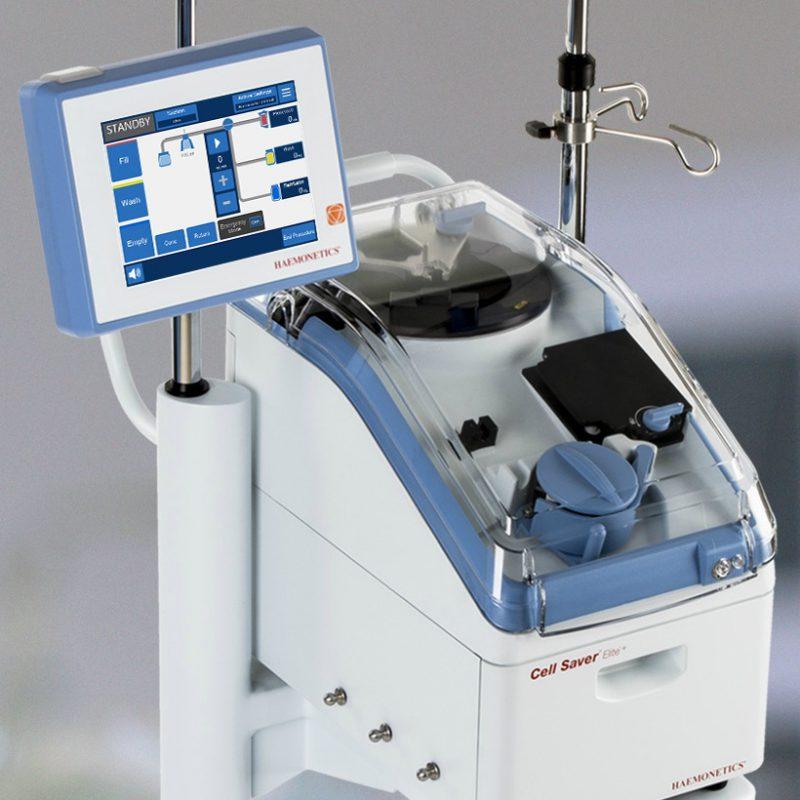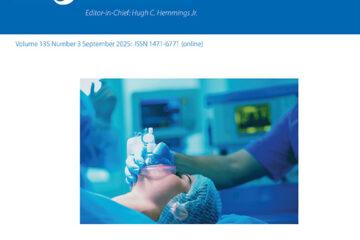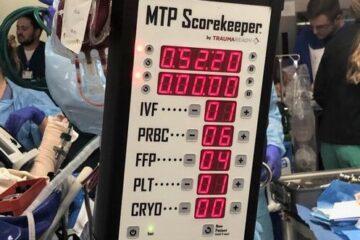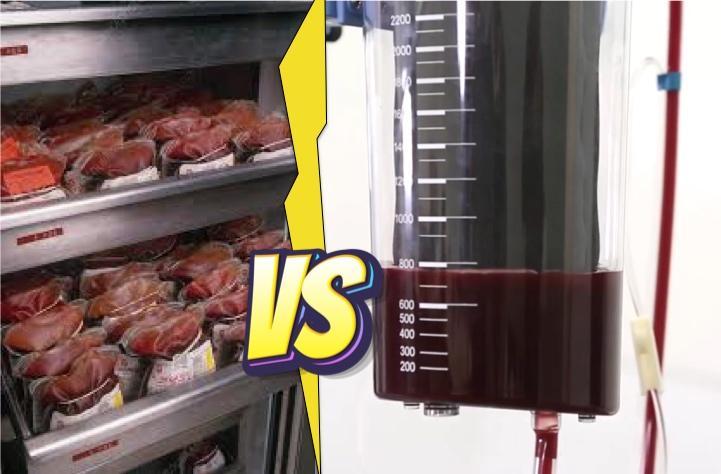
約翰霍普金斯大學(Johns Hopkins University)研究發現紅血球經儲存一段時間後,其細胞膜會硬化失去原本的彈性而無法擠壓通過體內較小的微血管向組織輸送氧氣。反之,術中回收的患者失血卻能保持良好的血球變形度(Erythrocyte Deformability),於手術期間回輸能讓患者獲得更健康、攜氧能力更好的紅血球。
在這項研究中,約翰霍普金斯大學的研究人員按輸血情形對32例心臟外科手術患者進行了分類:僅接受自體回收血的患者(12例,下圖綠線),接受自體回收血和少於五單位庫存血的患者(10例,下圖紅線)以及那些接受自體回收血以及五單位以上庫存血的患者(10例,下圖藍線),庫存血平均貯存天數為25天。所有人在手術前,手術中和手術後三天採集血液樣本檢查紅血球細胞膜硬度和彈性。
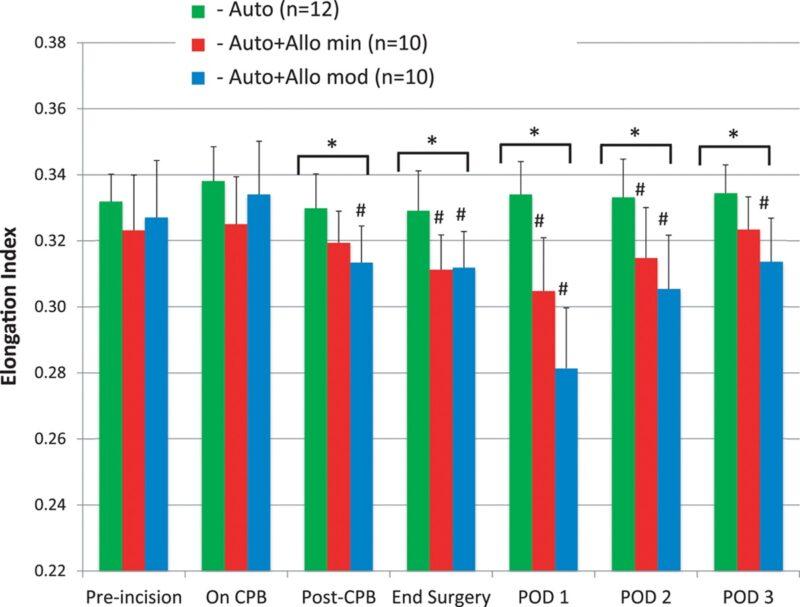
僅使用自體回收血的患者(綠線)其血球變形度在術前、術後無顯著差異;使用自體回收血+小於5單位庫存血的患者(紅線)則到術後三天才回復至基準狀態;使用自體回收血+大於5單位庫存血的患者(藍線)則到術後三天仍尚未回復至基準狀態。
結果顯示僅接受自體回收血的患者其紅血球能立即正常運作,就像是從未離開體內一樣。隨患者輸注的庫存血越多,體內紅血球整體彈性越差,甚至到手術三天後,輸注庫存血最多組別的患者其體內紅血球仍未能完全恢復其功能。換句話說,隨著庫存血存在『劑量反應』,隨輸注量增加,體內紅血球品質需要花越多時間恢復。
事實證明血液更像是牛奶,保存期限相對較短,而非像是紅酒越陳越香
Steven Frank, M.D. Johns Hopkins Medicine
It turns out that blood is more like milk, which has a relatively short shelf life, than a fine wine, which gets better with age.
為了回收使用患者的自體血,手術中會使用一種稱為「」的機器來收集患者在手術中的失血,沖洗掉不需要的脂肪、細胞碎片、抗凝血劑,然後離心分離出紅血球並回輸給患者。這項技術主要推廣於1980年代HIV / AIDS流行時期,藉由減少輸注異體血降低患者感染病毒的風險,這同時也降低感染B型或C型肝炎感染或引發不良輸血反應的風險,今日血液供應已更加安全但仍無法百分百免除此風險。自體血液回收目的也擴展至循環利用上,隨著許多研究證實新鮮、自體的血液對患者更好。
該研究主持人Steven Frank教授說:『我們使用Cell Saver,但在我看來用的仍不足夠。仍有許多數人寧可選擇使用庫存血,因為較不費力的作法也更容易取得。』
References
1.Salaria, Osman & Barodka, Viachaslau & Hogue, Charles & Berkowitz, Dan & Ness, Paul & Wasey, Jack & Frank, Steven. (2014). Impaired Red Blood Cell Deformability After Transfusion of Stored Allogeneic Blood But Not Autologous Salvaged Blood in Cardiac Surgery Patients. Anesthesia and analgesia. 118. 10.1213/ANE.0000000000000227.
2.Frank SM, Abazyan B, Ono M, et al. Decreased erythrocyte deformability after transfusion and the effects of erythrocyte storage duration. Anesth Analg. 2013;116(5):975–981. doi:10.1213/ANE.0b013e31828843e6
2.Scott AV, Nagababu E, Johnson DJ, et al. 2,3-Diphosphoglycerate Concentrations in Autologous Salvaged Versus Stored Red Blood Cells and in Surgical Patients After Transfusion. Anesth Analg. 2016;122(3):616–623. doi:10.1213/ANE.0000000000001071
3.Recycling a Patient’s Lost Blood During Surgery Better Than Using Banked Blood
4.Recycled Blood Better than Banked Blood
5.Recycled blood is better than donated blood for transfusions, Hopkins study finds
6.Zhou J. A review of the application of autologous blood transfusion. Braz J Med Biol Res. 2016;49(9):e5493. Published 2016 Aug 1. doi:10.1590/1414-431X20165493
